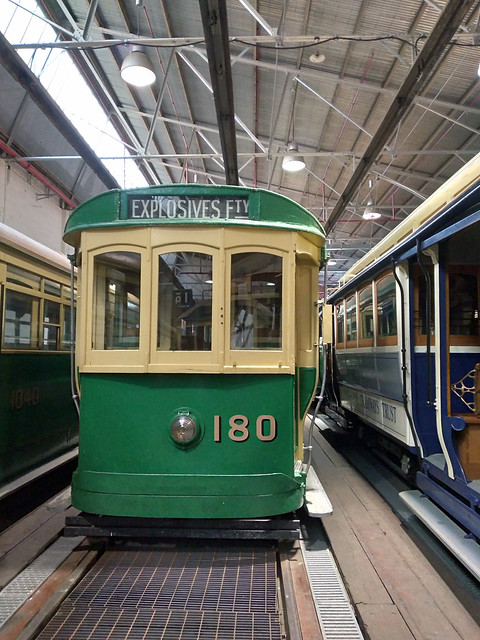The track down the slope towards the Explosives Factory has been laid. It is not yet wired up, so the trams aren’t running yet. The track is not embedded in a road and will need to be ballasted.
The tram connection to the Explosives Factory is inspired by the trams at the once isolated Footscray system in Melbourne. As seen on the photo from Melbourne Tram Museum, the T class No 180 is showing Explosives Factory in the destination box.
n the Maribyrnong/Footscray area there used to be a factory complex consisting of the Explosives, Ammunition, Ordnance and Pyrotechnic Factories. They were involved in productions for the Australian Defence Forces. During WW2 the factories operated around the clock 365 days a year.
Of the 8000 strong workforce 52 % were women and many of them lived locally. They used the trams to and from work. With trams every 7 minutes day and night they didn’t have to wait long for the next tram.
Originally the destinations for the trams were listed as the factory names, Explosives Factory, Ammunition Factory, Ordnance Factory and Pyrotechnic Factory, but after the Japanese bombing of Darwin 12 February 1942 the Commonwealth Authorities ordered the signs changed by the end of the month. Apparently to make it less obvious for spies where to find the factories. The destinations would be ‘Special A’, ‘Special B’ and ‘Special E’. To make life even harder for an eventual spy ‘Special A’ went to the Explosives Factory and ‘Special E’ went to the Ammunition Factory. How the Pyrotechnic Factory was signed is unknown.
The products from the Explosives Factory in Wombat Creek are of course destined for the mining industry and the trams will not arrive at the factory every seven minutes 24 hours a day.


